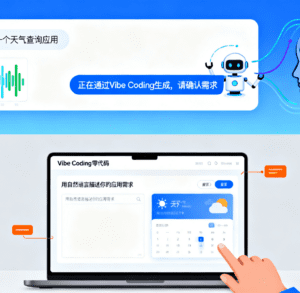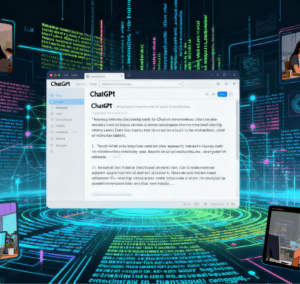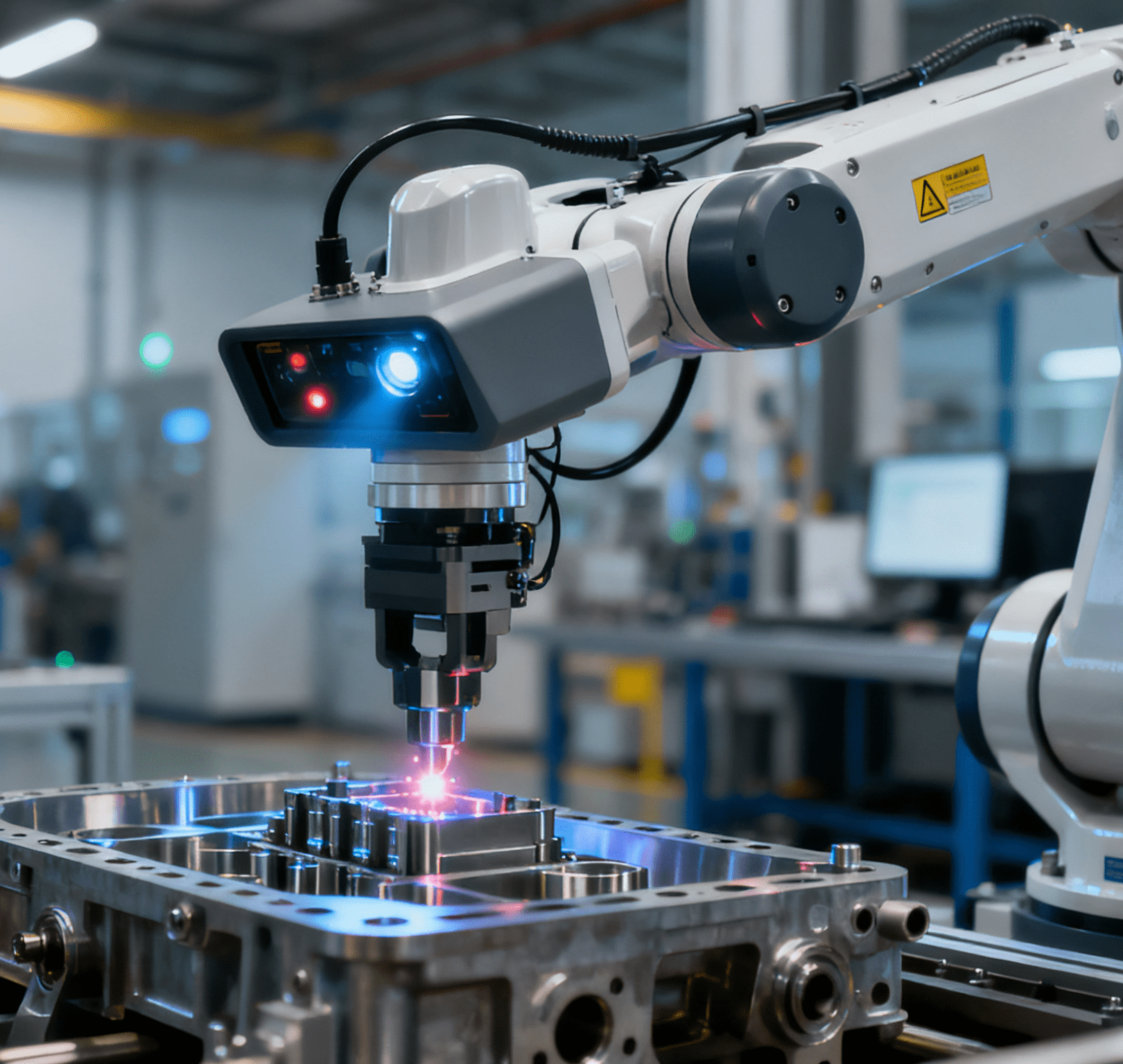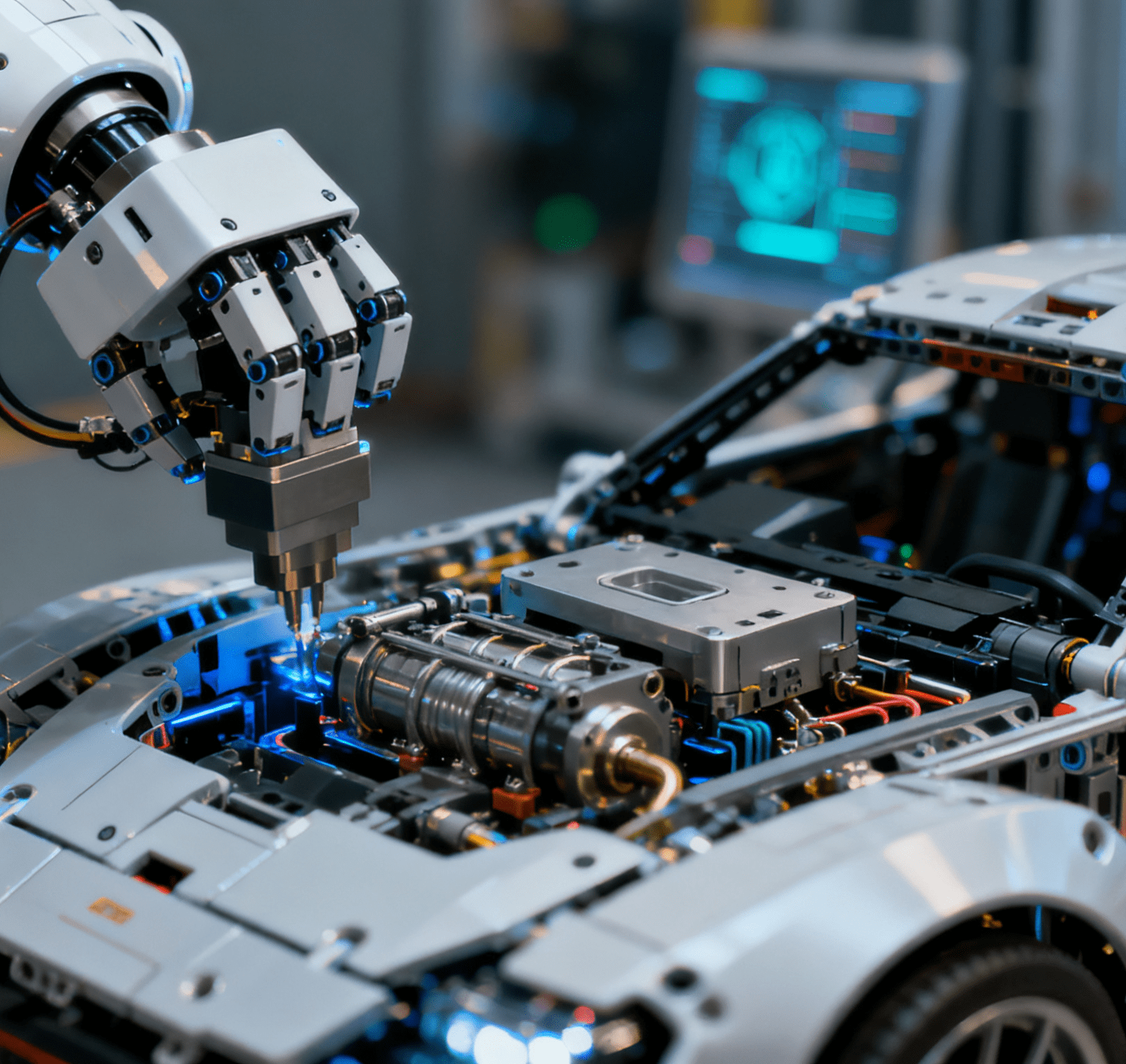
Opening: The Surge of AI, Sweeping Everywhere
In 2025, AI has embedded itself like invisible tentacles into every corner of life. Early in the morning, as sunlight streams into the bedroom, smart curtains sense the light and slowly open automatically. At the same time, a smart speaker softly broadcasts the day’s weather, news, and travel suggestions tailored to your schedule. Stepping into the kitchen, a smart refrigerator not only monitors the freshness of ingredients in real time but also generates personalized recipes based on your health condition and taste preferences, and even automatically places orders to purchase the required ingredients.
At the office, AI significantly boosts work efficiency. In the meeting room, an AI offline meeting assistant quickly converts participants’ speech into text, accurately identifies each speaker, automatically extracts key points, and generates well-organized meeting minutes, which are sent to all attendees immediately after the meeting. Office software, enhanced by AI, has become smarter too—with just a simple instruction input, it can complete complex tasks such as document formatting, data processing, and report generation.
In the medical field, AI plays an irreplaceable role. In hospitals, AI-assisted diagnosis systems help doctors quickly analyze medical images, identify potential disease risks, and greatly improve the accuracy and efficiency of diagnosis. Telemedicine, leveraging AI technology, allows patients to receive expert-level medical services at home, breaking geographical barriers and optimizing the allocation of medical resources.
The widespread application of AI has led to a flood of related terms. These terms appear frequently, from daily conversations to professional discussions. Understanding them not only helps you keep up with technological trends and talk about relevant topics smoothly with friends and colleagues but also enables you to better understand and apply AI technology in work and life. Next, let’s uncover the mystery of these AI terms together.
Decoding AI Terms
AI (Artificial Intelligence)
AI, short for Artificial Intelligence, is a broad concept aimed at developing technology that can simulate human intelligence. It is not a single technology but an integrated technical system covering multiple fields such as machine learning, deep learning, and natural language processing. Its goal is to enable machines to possess human-like thinking, learning, and decision-making capabilities.
Take intelligent customer service as an example. Traditional customer service requires manual responses to each customer inquiry, resulting in low efficiency. In contrast, intelligent customer service, using AI technology, can quickly understand customers’ questions, retrieve accurate answers from a large knowledge base, and provide 24/7 uninterrupted service. Intelligent customer service systems on e-commerce platforms like Taobao and JD.com handle massive inquiries every day, significantly improving customer service efficiency and satisfaction.
Algorithm
An algorithm is a set of instructions given to an AI model or software, determining how it operates. Simply put, it is like a detailed operation guide that tells the AI how to process data and make decisions. Take Douyin’s recommendation algorithm as an instance: it analyzes users’ interest preferences based on their browsing history, likes, comments, and duration of stay, then accurately pushes videos that users may be interested in. If you often watch food videos, Douyin’s algorithm will recommend more content related to food preparation and restaurant visits.
Chatbot
A chatbot is a software program powered by AI that simulates human interaction through messaging or voice platforms. It can understand natural language input by users and generate corresponding responses based on preset rules or machine learning models. In the e-commerce field, when you have questions about a product while shopping, you can click on the chat window and communicate with a customer service bot. It will quickly answer your questions, such as product size, material, and usage method. Many corporate customer service hotlines have also introduced chatbots—they first handle common questions, and transfer complex issues to human customer service, effectively improving service efficiency and reducing labor costs.
Data Mining
Data mining is the process of extracting valuable information from large amounts of user data. By analyzing patterns, trends, and correlations in the data, it provides a basis for software or decision-making to better serve users. E-commerce platforms use data mining to analyze users’ purchase records and find that when users buy a computer, they often also purchase accessories like mice, keyboards, and laptop bags. Based on this insight, when users browse computer product pages, the platform recommends related accessories, increasing the cross-selling of products. Banks also use data mining technology to analyze customers’ transaction data, identify abnormal transaction patterns, and timely detect potential fraudulent activities to protect customers’ fund security.
Deepfake
Deepfake refers to seemingly realistic images, videos, or audios generated using AI technology. These contents are often based on real people but are completely synthesized by AI. Deepfake technology poses serious risks—for example, some lawbreakers use it to create fake videos of celebrities for fraud or spreading false information. In South Korea, there have been multiple cases where deepfake technology was used to make pornographic videos to maliciously harm women, causing widespread social concern and worry.
Generative AI
Generative AI refers to AI programs capable of generating content, including text, images, videos, etc. Nowadays, it has become a hot topic in the AI field, and many innovative applications are based on this technology. OpenAI’s ChatGPT can generate coherent and logical text based on user input prompts, performing well in writing articles, stories, or answering questions. DALL-E 2 can generate realistic images based on text descriptions—for example, inputting “a cat in a spacesuit walking on the moon” will trigger the generation of a corresponding fantasy image, bringing new inspiration and possibilities to fields like creative design and artistic creation.
Hallucination
In the field of AI, hallucination refers to the phenomenon where an AI platform generates incorrect, false, or misleading information when answering user questions. Since AI models are trained on large amounts of data, hallucinations may occur when encountering situations not covered in the training data or when misunderstanding the question. For example, when asking an AI about the treatment method for a rare disease, it may provide unproven folk remedies or incorrect treatment suggestions. This is one of the problems that need to be solved in the current development of AI technology—researchers are working to reduce AI hallucinations by optimizing model training and increasing data diversity.
Large Language Model (LLM)
A Large Language Model (LLM) is an AI model trained on massive text data. It can understand natural language prompts and generate human-like responses. With huge parameters and rich knowledge reserves, LLMs can handle various natural language tasks. Well-known LLMs include GPT-4 and Baidu’s ERNIE Bot, which can be applied in multiple scenarios such as intelligent writing, intelligent translation, and conversational interaction. In terms of intelligent writing, LLMs can quickly generate high-quality articles, reports, and copy based on given topics and requirements, providing powerful support for content creators.
Machine Learning
Machine learning is a branch of AI that focuses on enabling models to learn from data like humans. In machine learning, models automatically adjust parameters by learning from large amounts of data to improve their ability to handle tasks, without the need for explicit programming guidance from humans. Take image recognition as an example: by inputting a large number of image data containing different objects into a machine learning model, the model learns the characteristics of different objects and thus can recognize objects in new images. Nowadays, many security systems use machine learning to implement face recognition access control—by continuously learning users’ facial features, they improve the accuracy and security of recognition.
Natural Language Processing (NLP)
Natural Language Processing (NLP) focuses on enabling AI to understand human natural language and generate natural language responses. It covers multiple aspects such as language understanding, generation, translation, and dialogue management, aiming to break down the language barrier between humans and machines. Google Translate uses NLP technology to achieve fast and accurate translation between multiple languages, facilitating communication among users around the world. Intelligent voice assistants like Siri and Xiaoai are also based on NLP technology—they understand users’ voice commands and provide corresponding services, such as information query, reminder setting, and music playback.
Neural Network
A neural network is an AI processing model that imitates the structure of neurons in the human brain. It consists of a large number of interconnected nodes (neurons), which are arranged in layers, including input layer, hidden layer, and output layer. By adjusting the connection weights between nodes, neural networks can perform complex processing and analysis of input data, thereby realizing functions such as pattern recognition and prediction. In speech recognition, neural networks can learn the characteristics of speech signals and convert them into text, enabling voice assistants to understand users’ voice input. In the field of image recognition, neural networks can identify objects, scenes, and other information in images, and are widely used in security monitoring and autonomous driving.
Prompt
In the context of AI, a prompt refers to the text content input by users to an AI model. It can be in the form of questions, instructions, descriptions, etc., and is used to guide the AI to generate specific outputs. The quality and accuracy of prompts directly affect the effect of AI responses. For example, when using an AI image generator, inputting a detailed prompt like “a beautiful sunset over the sea, with golden sunlight shining on the water and several sailboats sailing” allows the AI to generate a more satisfying and exquisite image. When using an AI text generator, clear prompts can help the AI produce more targeted and logical text, such as writing a thesis outline or a story synopsis.

Recognition
In the AI field, recognition usually refers to image recognition or speech recognition. Image recognition enables AI to analyze input images or videos and identify elements such as objects, scenes, and people in them. For example, in intelligent security systems, image recognition technology can monitor surveillance images in real time, identify suspicious people and vehicles, and issue alerts promptly. In the transportation field, license plate recognition systems use image recognition technology to automatically identify vehicle license plates, enabling functions such as automatic parking fee collection and traffic violation capture. Speech recognition converts speech signals into text, laying the foundation for intelligent voice interaction by enabling AI to understand users’ voice commands.
Token
A token is a measurement unit used by AI platforms to count the number of prompts used by users, similar to a resource quota. Different AI platforms may have different definitions and usage methods for tokens—users receive a certain number of tokens based on their payment, and each time they input a prompt to the AI model, a corresponding number of tokens are consumed. In ChatGPT, users’ questions and interactions consume tokens; when tokens are used up, users need to purchase more to continue using the service. The token system helps platforms manage resource usage and provides users with flexible usage options, allowing them to buy different quantities of tokens according to their needs.
Training Data
Training data refers to large sets of data used by AI companies to train models. This data contains various information and patterns and serves as the foundation for models to learn and improve their capabilities. By learning from training data, AI models continuously optimize their parameters to enhance their ability to handle tasks and improve accuracy. Taking language models as an example, training data may include a large number of books, articles, and web content—models master language grammar, semantics, and expression methods by learning this data, thereby generating natural and fluent text. To improve the generalization ability of models, training data needs to be diverse and representative, covering various scenarios and fields.
Vibe Coding
Vibe Coding is an innovative coding method that allows users to create applications, websites, and software through simple natural language text prompts, without the need to master traditional programming languages. This cutting-edge technology leverages the powerful capabilities of AI to convert natural language into executable code, greatly lowering the threshold for programming and enabling almost anyone to participate in software development. For example, users only need to input a prompt like “Create a simple e-commerce website with product display, shopping cart, and payment functions” into a Vibe Coding tool. The tool will automatically generate the corresponding website code framework based on this prompt, and users can quickly build an e-commerce website by making simple personalized settings. The emergence of Vibe Coding has brought new changes to the field of software development, promoting the rapid realization of innovation and creativity and allowing more people to turn their ideas into practical software applications.
The Close Connection Between AI Terms and Life & Work
The development of AI is like a surging wave, creating huge impacts in many aspects such as the economy, workplace, and social interactions. From a macroeconomic perspective, AI has become a powerful engine for economic growth. In the manufacturing industry, AI helps enterprises achieve intelligent production, optimize supply chain management, reduce production costs, improve production efficiency, and significantly enhance product quality. Specifically, AI-driven automatic hardware part feeding and assembly systems have become a mainstay in high-precision manufacturing—by integrating machine vision recognition and adaptive control algorithms, these systems can automatically identify, sort, and assemble different types of hardware parts with micron-level precision, reducing manual error rates by over 90% and doubling assembly line efficiency. In the service industry, AI-driven applications like intelligent customer service and robo-advisors not only improve service efficiency but also reduce labor costs, driving the growth of total factor productivity. According to relevant research, in 2025, the incremental AI-related capital expenditure of the four major U.S. cloud vendors will reach 86.1 billion U.S. dollars, accounting for 0.3% of GDP; the incremental expenditure of leading Chinese enterprises will be approximately 149.8 billion yuan, accounting for 0.11% of GDP. The technology diffusion effect is further promoting the intelligent transformation of traditional industries, with its investment scale comparable to that of new energy.
In the workplace, the impact of AI is equally profound—it is reshaping the career landscape. Repetitive and rule-based jobs are gradually being replaced by automation and AI technology. For example, in Foxconn’s “dark factories” (factories operating without human workers), a large number of assembly line workers have been replaced by robots. In the customer service industry, the widespread application of intelligent customer service systems has reduced the demand for human customer service. However, AI has also spawned a series of emerging occupations, such as algorithm engineers, data scientists, and AI ethics experts. These new occupations have significantly different skill requirements from traditional ones, placing greater emphasis on technical capabilities like data analysis, programming, and machine learning, as well as innovative thinking and the ability to solve complex problems. This requires workplace professionals to continuously learn and enhance their skills to adapt to the career needs of the AI era and achieve collaborative work with AI.
In the social field, AI has also brought brand-new experiences and changes. The emergence of AI social products has transformed people’s ways of socializing and their social objects. Chatbots built based on instant messaging dialog boxes can provide users with cost-effective, real-time one-on-one companionship, meeting users’ needs for “emotional value.” Some young people communicate emotionally with AI and regard it as a “psychological outlet” to talk about their troubles. Global social applications use intelligent translation technology to break down language barriers, allowing users to communicate easily with people from all over the world and expand their social circles. However, AI social interaction has also triggered some reflections—for example, can it completely replace real human interaction? Will long-term communication with AI lead to emotional apathy and alienation among people?
It is evident that understanding AI terms has become an essential skill for personal development and social integration. At work, mastering these terms allows you to better understand and apply AI technology, improve work efficiency, and seize new opportunities for career development. In daily life, understanding AI terms helps you better understand and adapt to the intelligent products and services around you, and enjoy the convenience brought by AI. Whether participating in workplace competition or engaging in daily social interactions, understanding AI terms enables you to cope with various challenges of the AI era more calmly, keep up with the pace of the times, and take the initiative in this era of change to maximize your personal value.
Conclusion: Embrace AI, Look to the Future
In this era of rapid technological development, AI has become a core force driving social progress, with far-reaching influence. Understanding AI terms is not only a necessary step to keep up with the times but also a key to unlocking future opportunities. It allows us to understand the principles behind AI-related products and services, make wiser choices, collaborate better with AI at work, improve efficiency, and create greater value.
For individuals, actively learning AI knowledge is an inevitable requirement to adapt to the development of the times. Whether you are a workplace professional seeking career breakthroughs or a student planning your future development direction, AI contains infinite possibilities. Through learning, we can master the skills to collaborate with AI, cultivate innovative thinking and the ability to solve complex problems, and thus remain competitive in the fierce competition. At the same time, we should also pay attention to the ethical and social issues brought by AI, such as data privacy and algorithmic bias, to ensure that the development of AI conforms to human values and interests.
Looking to the future, the development prospects of AI are bright. With continuous technological breakthroughs and innovations, AI will play an important role in more fields and create a better life for humanity. It may help us solve global challenges such as climate change, healthcare, and energy crises, and may also bring new industries and business models, injecting new vitality into economic development. Let us embrace the arrival of the AI era with an open mind and proactive actions, explore the infinite potential of AI together, and create a more wonderful future.




















